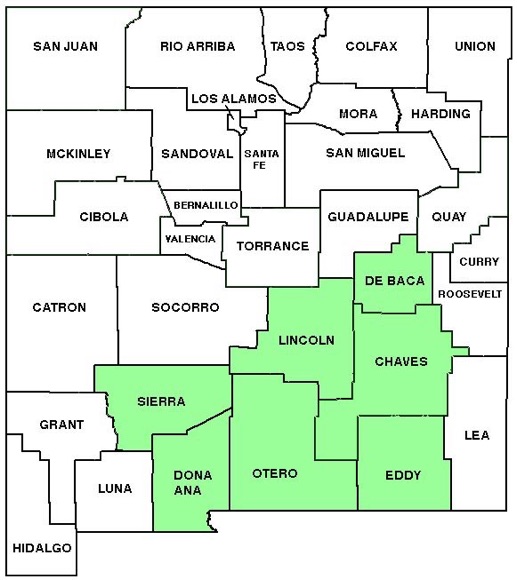WILDFLOWERS OF NEW MEXICO
The blue-green stems of this barrel cactus can reach 16-inches tall and 8-inches wide with 8 broad, rounded ribs lined with spine-producing areoles. The straight to curved (not hooked) pinkish, gray, white, or blackish spines may interlock along the ribs on larger specimens.
FLOWER: April–September, especially after rains. Delicate flowers, 1 1/8–3 1/8-inch wide (2.8–8 cm) with showy, rosy-pink to magenta, uniformly-colored inner tepals bloom from the apex. Narrow, pointed outer tepals have black tips. Dense tufts of woolly hairs hide the clusters of pinkish, rounded fruit, 3/8-inch in diameter (10 mm), around the stem apex.
SPINES: Each areole has 6–9 stout, round to flattened radial spines cross-ribbed with round ridges. The similar 1–3 central spines reach 3/4-2-inches long (20–50 mm). The spines don’t hide the surface.
HABITAT: Arid rocky, sandy soils of desert scrublands, limestone hills.
ELEVATION: 2,000–6,000 feet.
RANGE: AZ, NM, TX.
SIMILAR SPECIES: The smaller Horse Crippler Cactus, E. texensis, has a stem deeply set in the ground, 13–27 narrow ribs, and red fruit not hidden by woolly tufts.
NM COUNTIES: Southeast quarter of NM in low-elevation, arid habitats: Chaves, De Baca, Dona Ana, Eddy, Lincoln, Otero, Sierra.

DEVIL’S HEAD CACTUS, EAGLE’S CLAW
ECHINOCACTUS HORIZONTHALONIUS
Cactus Family, Cactaceae
Perennial cactus


THE CONTENTS OF THIS WEBSITE ARE COPYRIGHTED AND CANNOT BE USED
WITHOUT PERMISSION OF GEORGE OXFORD MILLER

Outer tepals have black tips, and a dense cluster of wool surrounds the flower and hides the fruit.

Range Map for
Echinocactus horizonthalonius
The barrel stem has 8 broad, rounded ribs lined with stout spines.
EMAIL ME